REFLECTION
Here my process starts: researching AFRO FUTURISM from multiple angles with a focus on the Caribbean landscape. I chose this angle to reimagine decolonial Black futures. To write from a personal auto-theoretical perspective, I can only write from my personal perspective.
STARTING POINT
From the past to the future looking into the cultural heritage and Black expression. The evolution of different ways of Afro-Caribbean expression. Re-imagining decolonial black futures from a Caribbean point of view.
SOLANGE WHEN I GET HOME
ANALYSIS
This article starts with:
"At its core, art has always been about self-expression. A way of filtering the world through personal experiences, beliefs, fears, sadness and joy, and coming out the other side with something that is an extension of the deepest part of yourself."
This feels like the main reason of making this artwork.
I’ve been telling a story about a really pivotal moment in my life when I was around ten years old that left an explosive impact on me. I went to a church summer camp in Houston and it was my first time experiencing what I would call the spirit - however you feel closest to interpreting that - and, because I really did not know how to unpack it all, it scared the hell out of me. I struggled with confronting that force for so long, this idea of an energy so strong it could transform your tongue or cause you to faint or shout and dance in ways that were out of your body. I would just want to run from it.
JACOLBY SATTERWHITE
ANALYSIS
WHEN I GET HOME finds multidisciplinary artist Solange Knowles’s deeply introspective vision of a spiritual expedition reckoning with the question “Where is home?” Accompanying her acclaimed 2019 album of the same name, the film taps imagery of her hometown’s (Houston, TX) culture with flights of surrealism spotlighting Black cowboys, space, futurist worlds, and ritualistic movements that characterize evolution as a recurring presence. Solange explores concepts of origin, fear, safety, and reclamation through the power of ancestral roots and the creation of one’s own kaleidoscopic universe. Presented here in Solange’s director’s cut, WHEN I GET HOME is a dazzling immersion into the imagination of an artist whose vision knows no bounds.” - The Criterion Channel
CONCLUSION
Solange used her background in 'Black Cowboy Culture' to emphasize a new representation and future feel on how this topic develops within the context.
The visuals have a lot of spiritual references connected to Vodu culture, which is very big on the Coast side of the Americas. She re-invented them in designs that have a futuristic feeling.
ANALYSIS
SMALL: Can you say more about that?
SATTERWHITE: It was a safe queer space where I could just dissolve—in my case, to reanimate myself. It was around the time my mother passed away in 2016. It was just a personal safe space that I wanted to archive and preserve in my own work, for myself.
[A video set to a musical track starts to play on Satterwhite’s computer.]
This is the second chapter, which is called “Birds in Paradise.” It’s the result of my collaboration with Solange Knowles. I felt like her and I were both thinking on this Saturn return kind of wave, where it was more about being around 32 and reconciling things from the past in order to transition into a full adult. Circularity was the theme. She was talking about black rodeos in her work, so I started thinking about architectural spaces that express a certain kind of circularity and 360º point of view. This video plays on circularity and the rituals. There’s the disco ball spinning, the crop circles, the colosseums. There are also performance rituals that happen later in this video, which are done in these churches. I’m being shrouded by this other black man, and it’s like he’s orbiting my body. There are other references to Yorùbá Gẹlẹdẹ masquerade culture, like the Yorùbá folklore of the Mami Wata on this channel. She’s coming to bathe me and renew me and bring me back out.
ANALYSIS
So, I was producing Domestika and the Birds in Paradise series. Birds in Paradise going to be playing at Pioneer Works and at Fabric Museum. Domestika is the virtual reality piece that I’m showing at both exhibitions. The music [in Birds in Paradise and Domestika] is from the album. Pioneer Works helped us mix and master and produce the album as a vinyl record. It has a 30-page book and it’s going to be streaming on all these services. Wolfgang Tillmans did the cover. It was shot at Spectrum, the nightlife space that Gage the Boone started that closed [in early 2019]. It was a place where we would all collectively go as artists. It felt like a spiritual think-hub among creative minds who were troubled. I felt a great deal of growth happen with my experiences related to that space.
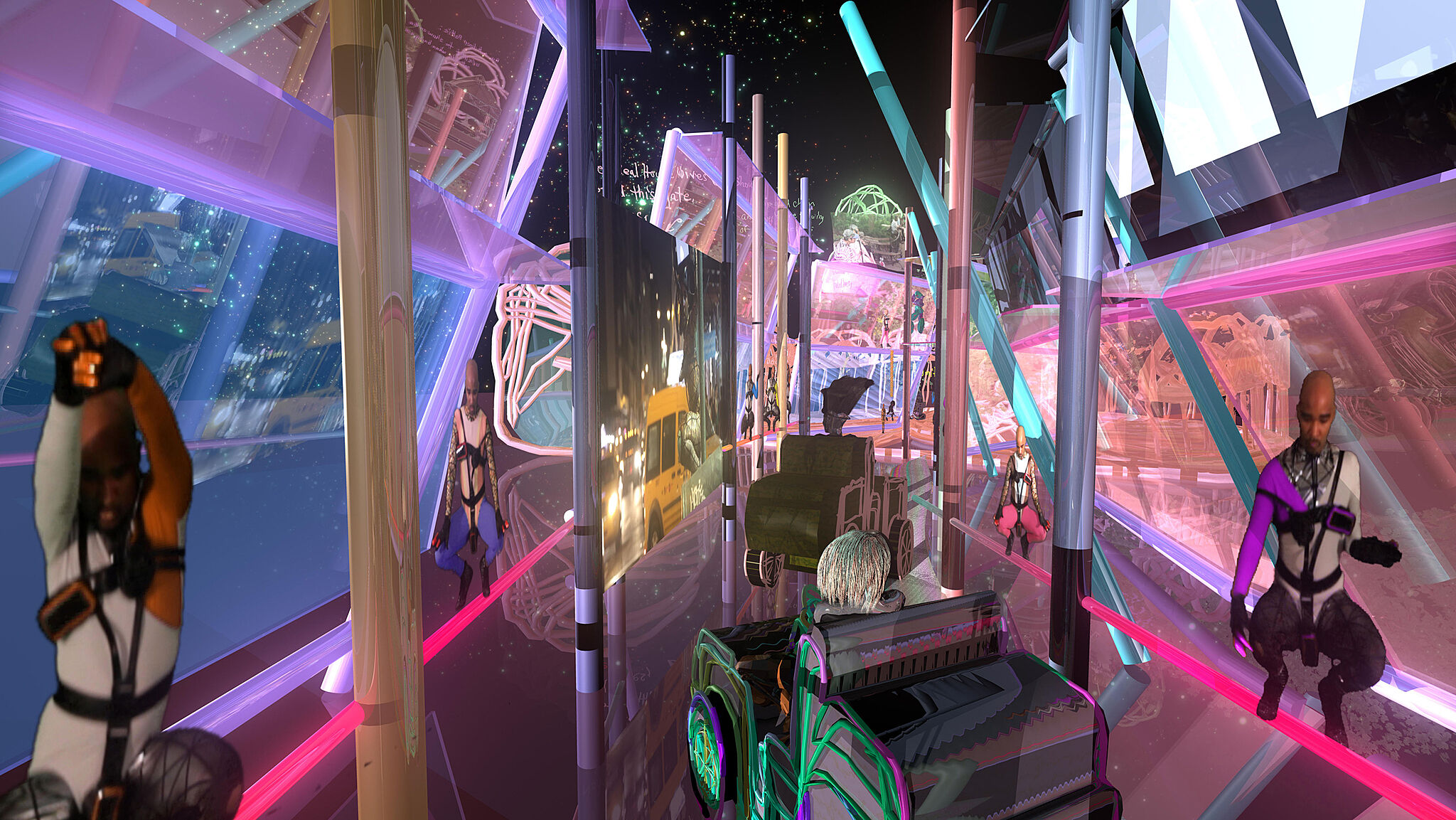
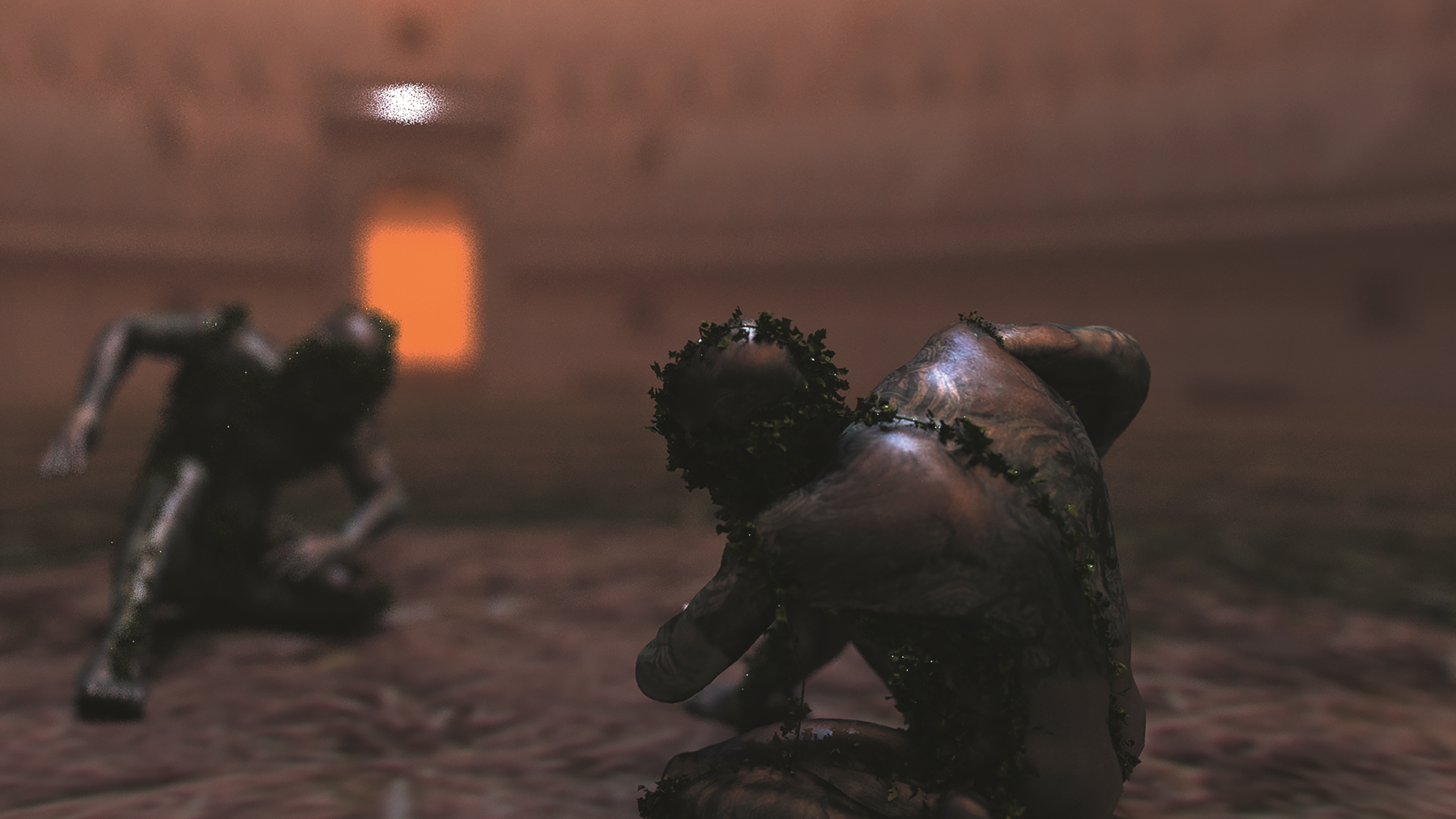
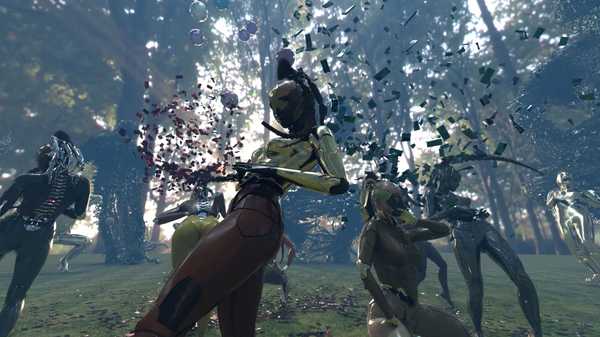
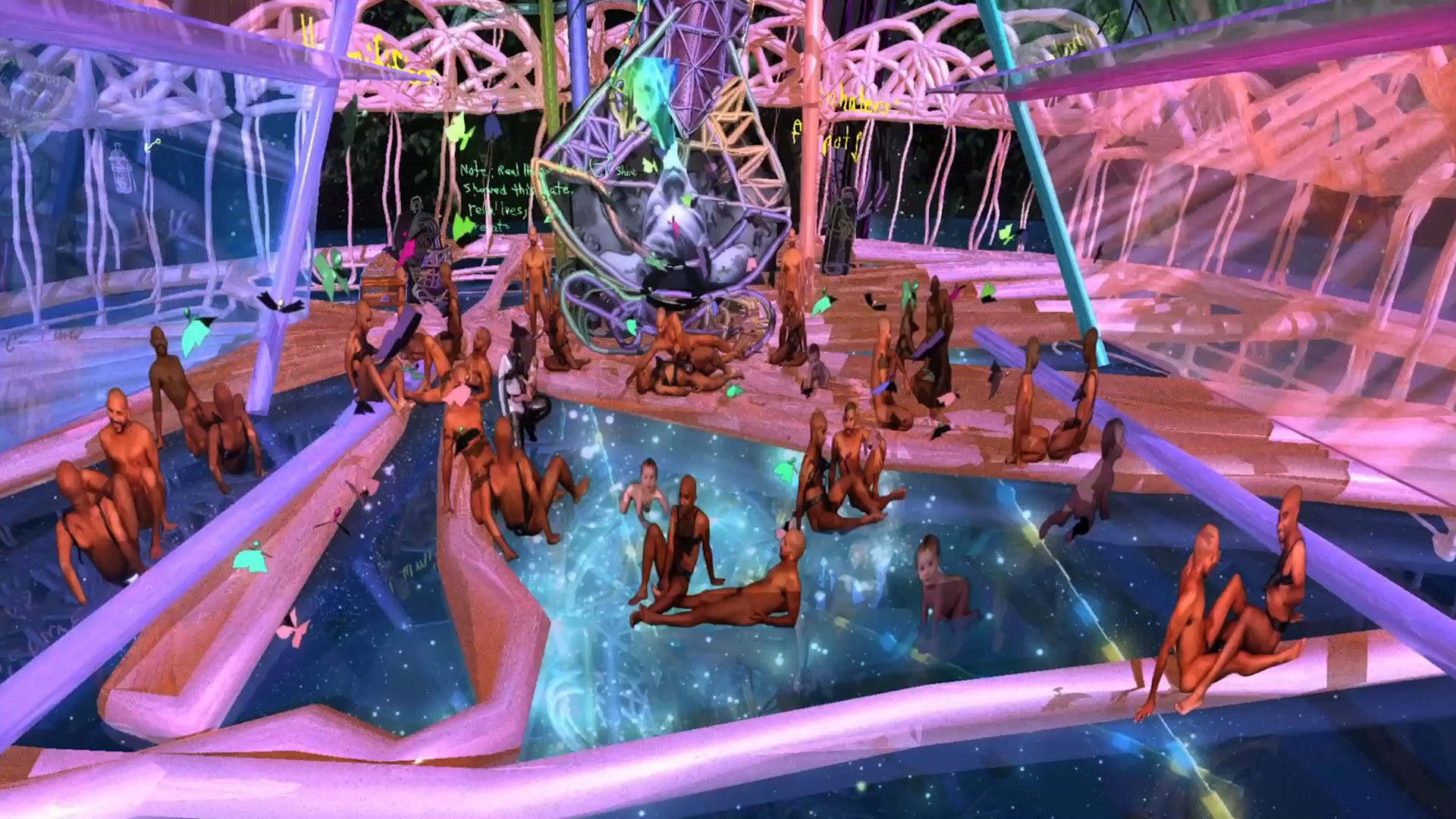
ANALYSIS
“I've always been fascinated by Jacolby Satterwhite’s ability to usher viewers through the numerous worlds of his mind’s galaxy. His digital narratives both affirm and encourage unique identities in the space of art and technology. He depicts the vibrancy of surrealism by centering authenticity and otherness. Whether it’s using dance as a forum or archival footage to evoke a spirit, his work sets a precedent for the kind of impact and influence culture has on creative expression, invention and autonomy.”
– Solange Knowles
CONCLUSION
Satterwhite creates a utopian world where Black women have “peak agency,” and he depicts them as fembot-like figures fighting off adversity. The work was created during the period of protests surrounding the murders of George Floyd and Breonna Taylor.
He wanted to make it really repetitive like a video art piece from the 1960s, where you get exhausted watching her triumph and everything else is kind of being sublimated.
“In the background, you see videos that reference zeitgeisty issues. But at the end she evolves into this bigger, more intense force, and the Breonna Taylor shrine pans out at the end" says Satterwhite.
MINOR FASHION & EDITORIAL BRANDING
KEELING QUEER TIMES BLACK FUTURES Ch. 1
ANALYSIS
I start with Sun Ra because he created his own cosmology, eschew- ing his given name and place of birth, Herman Blount, born in 1914 in Birmingham, AL, and taking the name Sun Ra, claiming to be from Sat- urn. I understand this to be a generative act of (re)creation that, as I have suggested in reference to his film Space Is the Place, posits an alternative imaginary of extant space and time, and the set of possibilities that re- side therein. Although he was an eccentric jazz musician, his interest in outer space and unconventional musical expressions.
REFLECTION
I am intrigued by the way Sun Ra imagines a Black Utopia without the effects of colonialism. This approach to me is the way to imagine Black people in the new world. And to see the full potential for further development in the fashion, art and societal developments.
ANALYSIS
In the opening sequence of Space Is the Place, Sun Ra’s character an- nounces that he wants to set up a colony for Black people on another planet to “see what they can do on a planet all their own, without any white people there.” About that utopian aim, he states, “Equation-wise, the first thing to do is to consider time as officially ended. We’ll work on the other side of time. We’ll bring them here through either isotopic tele- portation, transmolecularization or better still, teleport the whole planet here through music.”
Various conceptualizations of Afrofuturism have drawn on the temporality of, or the organization of time within, Sun Ra’s particular version of plastic dialogue and the politics it supports.
BLKNWS by Kahlil Joseph
TED TALK by Adriel Charles
ANALYSIS
The Caribbean has always been classified as a region plagued by underdevelopment. Following the theme "Progression through Reflection" emphasis and consideration must be placed on the past that has potentially set the region at a disadvantage. How can the nations of the region emerge victorious from this ongoing battle?
Adriel Charles is a 2021 graduate of the BSc International Relations with Cultural Studies. During her tenure as a student her studies focused on the Caribbean as well as its diaspora and the role played in the international system.
During her tenure as a student her studies focused on the Caribbean as well as its diaspora and the role played in the international system. Fueled by her passion of international policy and cultural exchange she pursued her minor focusing on the history and ongoing development of the Caribbean as a region. Following the overarching theme of Progression through Reflection it is most fitting that she explores the Genesis of the Caribbean society in illustrating the modern Caribbean. As well as focusing on the future of the Caribbean based on the past.
URL
https://www.thefader.com/2022/06/13/brent-faiyaz-details-featured-artists-and-producers-wasteland
https://www.miandn.com/artists/jacolby-satterwhite?view=slider#17
https://www.culturedmag.com/article/2016/12/11/jacolby-satterwhite
ANALYSIS
Joseph's film installation consists of two flat screens mounted side by side on a background in the form of a photo wallpaper. With it, Joseph realises a 2-channel "news broadcast" in which the boundaries between art, journalism, entrepreneurship and cultural criticism are blurred; a critical analysis of how racial issues and stories collide with information systems.
DRAFTS OF THE ARTICLE
ARTIVITIVE APP FEATURE
REFLECTION
We have decided collectively that it would be a nice feature to create a visual with the interview, due to it mostly being text-based. And to stimulate the reader to enter a world within the article.
REFLECTION
The beginning of the soundscape is a multi-layered of where they would like to see the reflection reflected. It gives a feeling of the physical place and ambience, as an extra layer to the outfit.
Articles of Reference
REFLECTION
My starting point starts with my own article due to my personal experience already being written out, I only have to change the context to make it fit the heart of the brand. The heart of brands is more focused on the future of headwear, I feel like I can write about Afro futurism in this format and how it could guide us into the future.
ANALYSIS
The Angisa process is something that is a craft (maybe interesting to feature). The different Angisas all have a story to tell and a secret message to convey. The traditional costume; Koto and Angisa is an expression that is so culturally engaged within Surinamese culture and part of identity that Surinamese people guard as it being cultural heritage. The extensive hand fans, joy and colourful dressing are some elements that I would love to bring back within the description of this event in the article. It is a direct showing of celebration, empowerment and joy.
REFLECTION
When I analyse where I experienced the beauty of the Angisa and the pictures I have in my head where I mostly noticed them, it has been the festival of Kwaku. I feel like this is a part that needs to be feautured within the article because this is a physical space where I mostly saw the Angisa's and Koto's - combined with my personal family experiences.
REFLECTION
After researching the characteristics of Kwaku. I noticed that you can't talk about Surinamese embodied experiences without mentioning the important role of music within the community. Kaseko is a direct reference to Surinamese experiences. I would love to reflect that through the article.
ANALYSIS
Wittie Visie is a song that I grew up with, never knowing what the meaning of the song is. I feel it is hitting the problem that Afro-Surinamese has within a western context and would like to feature it in the article.
REFLECTION
For the article; I would love to describe the smell, observations and experiences of Kwaku and the music. Showing how rich and powerful this community and style is.
ANGISA RESEARCH
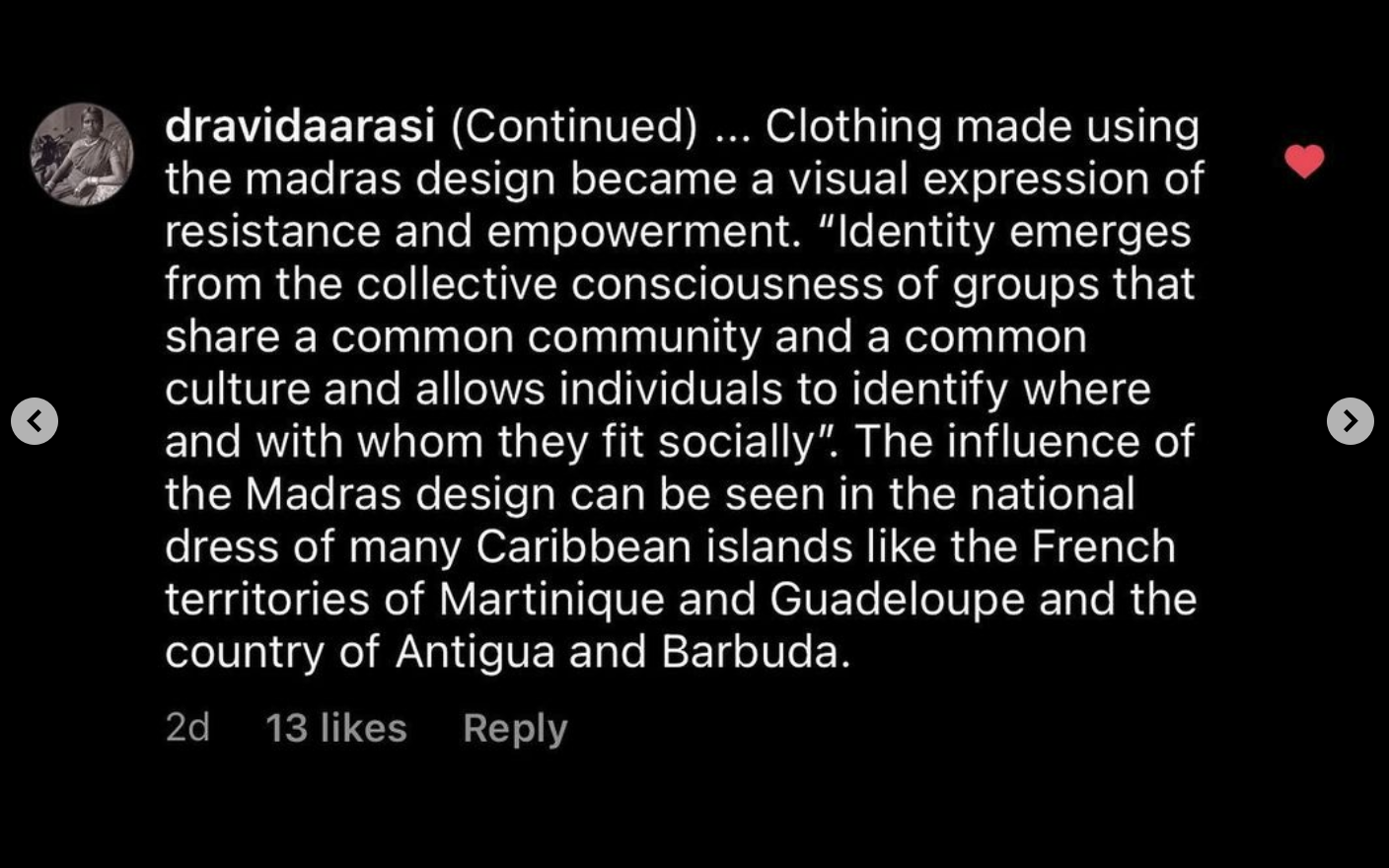
ANALYSIS
A post by @knowyourcaribbean
Why wearing Madras fabric is Gangsta.
Sharing from @dravidaarasi
The Madras handkerchief became popularized in the Caribbean due to the Slave trade. The Madras Handkerchief was heavily associated with the ‘triangle of trade’. After being manufactured in Madras, India it was transported to London to be auctioned off to either the Royal Africa Company or to private traders. The Madras handkerchief was even used to barter for enslaved in West Africa.
British manufacturers decided to copy the Madras design and mass reproduced it for colonial markets in the Americas. Saturating the colonial market with Madras checks made this cloth accessible to enslaved people, who adopted the Madras checks to clothe themselves making dresses and headscarves with them.
Furthermore, in Haiti, the Dutch West Indies, and Spanish Louisiana laws were passed to restrict the types of clothing and adornments enslaved and people of colour could wear in public. In 1786, Governor Esteban Miró in Spanish Louisiana wrote into law the “handkerchief clause” which prohibited people of colour “from wearing feathers or jewels in their hair” and forced them to “cover their hair with handkerchiefs”.
This restriction of clothing is what gave rise to Madras headscarves as Black female femininity and insurgency were encoded in colonial society. The law that was passed to shame black hair and deem that it has no place in public gave rise to a distinctive and expressive fashion.
The Haitian author Marie Vieux Chauvet refers to the Madras headscarf as a ‘public assertion of Black femininity within the white colonial social order of Haiti’. Similarly, Haitian artist Gina Samson claims the madras headscarf was ‘a gendered symbol of resistance that can be located within a larger history of Caribbean artistic engagement at the intersections of fashion and protest’.
After the end of slavery, dresses and headscarfs made using the Madras design became a marker of a collective identity in the Caribbean. The design was used in textile to establish a distinctive community by allowing artistic expressions to be explored. In many cases, the madras design was mixed with the Nigerian Gele.
REFLECTION
The Koto dress was a tool for the oppression of Black women to hide their figures to not be a distraction for the White slaveholder. The Black Women renowned it and transformed it into cultural pride and resistance symbol.
My mother is one of these women and this is where I would put the focus point as an inspiration of unapologetically dressing.
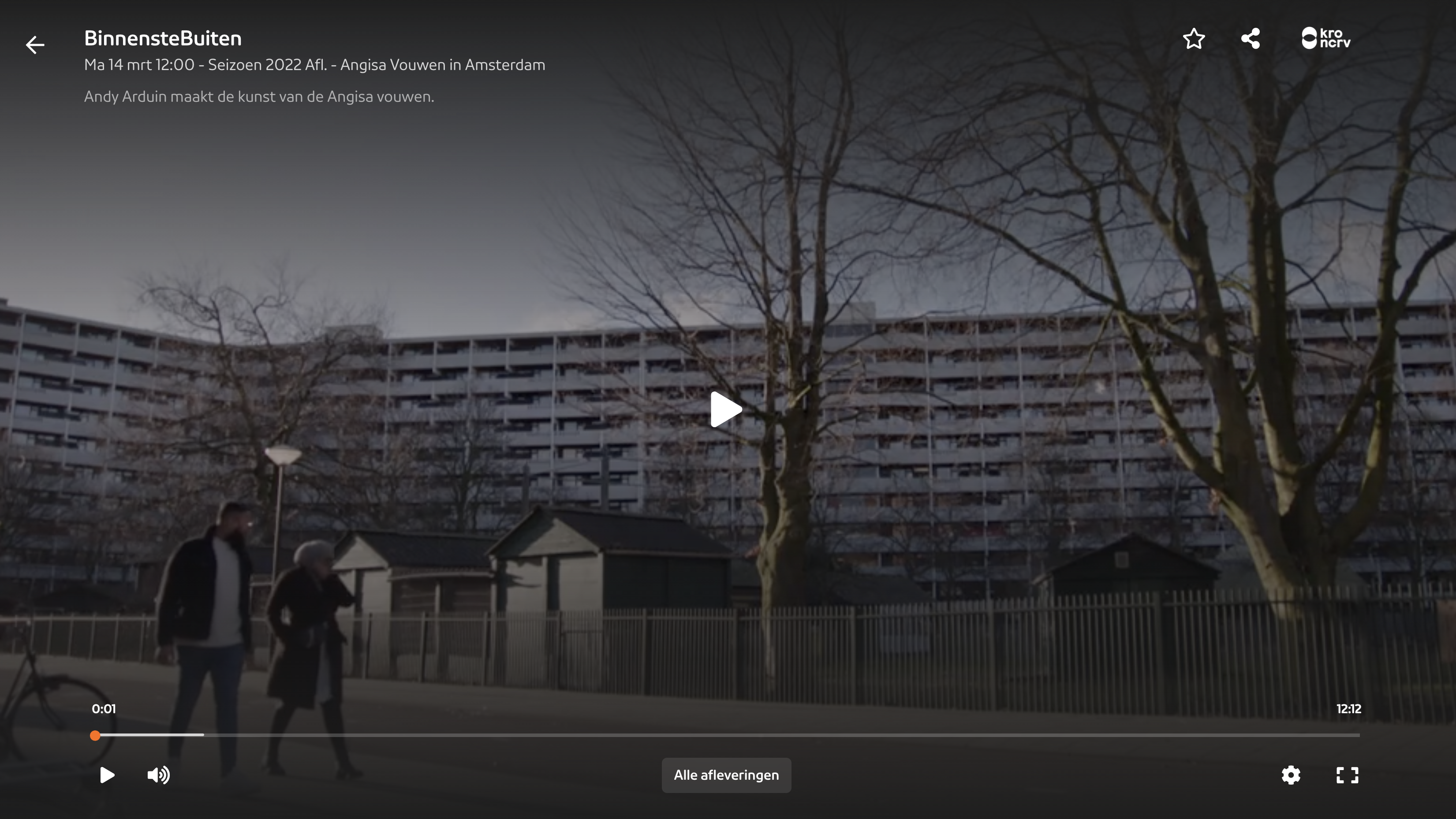
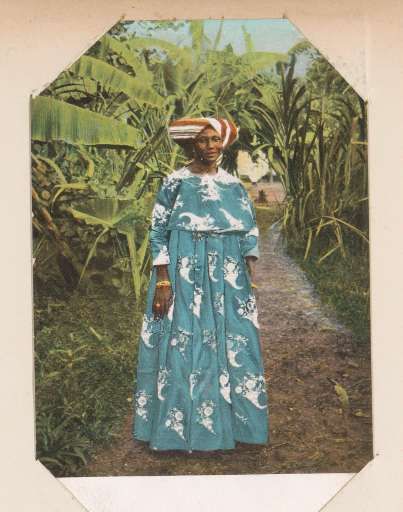

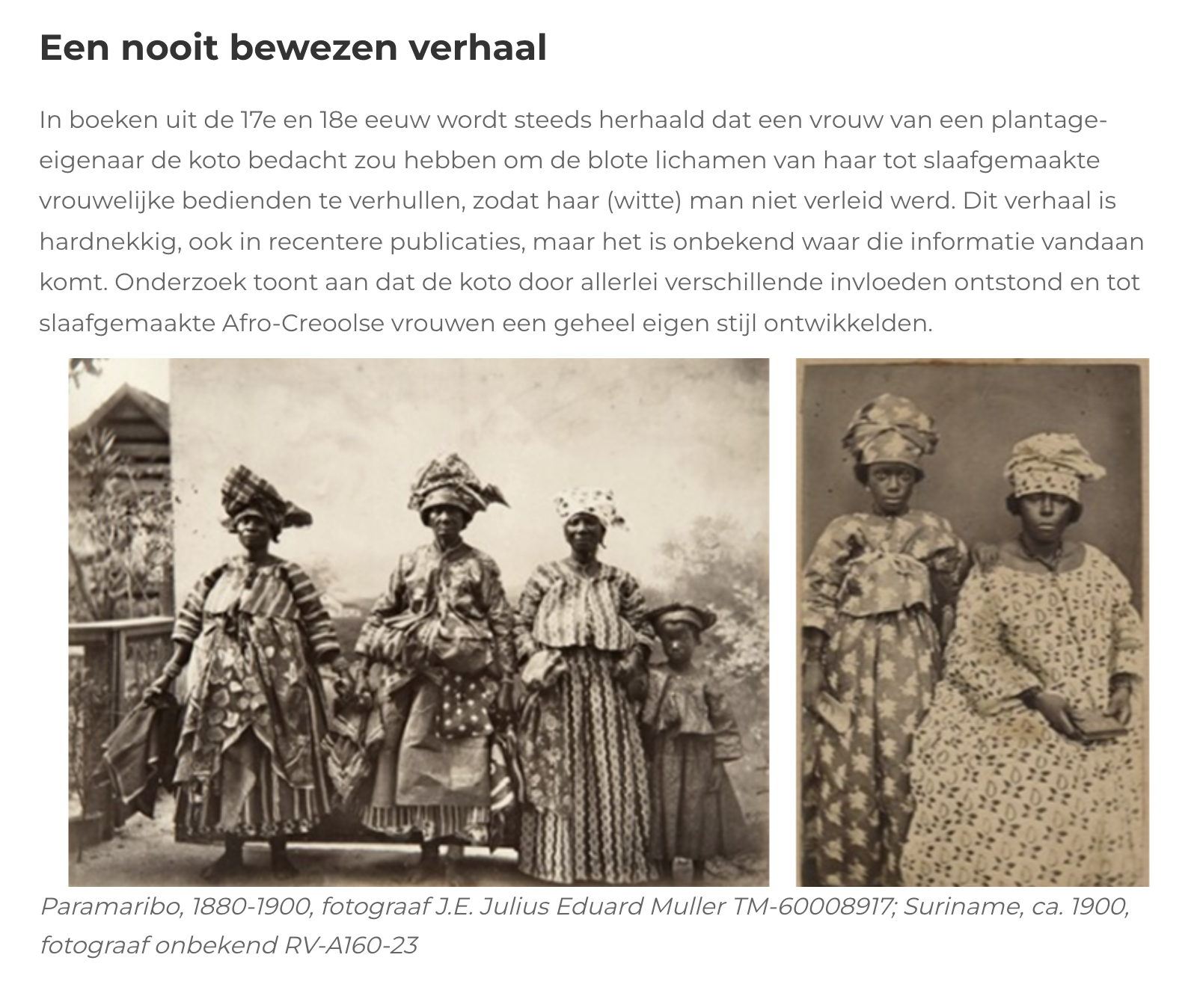
This restriction of clothing is what gave rise to Madras headscarves as Black female femininity and insurgency were encoded in colonial society. The law that was passed to shame black hair and deem that it has no place in public gave rise to a distinctive and expressive fashion.
The Haitian author Marie Vieux Chauvet refers to the Madras headscarf as a ‘public assertion of Black femininity within the white colonial social order of Haiti’. Similarly, Haitian artist Gina Samson claims the madras headscarf was ‘a gendered symbol of resistance that can be located within a larger history of Caribbean artistic engagement at the intersections of fashion and protest’.
After the end of slavery, dresses and headscarfs made using the Madras design became a marker of a collective identity in the Caribbean. The design was used in textile to establish a distinctive community by allowing artistic expressions to be explored. In many cases, the madras design was mixed with the Nigerian Gele.
RESEARCH METAVERSE
REFLECTION
As I have 0% knowledge about what the Metaverse is, I have to start at the beginning with researching what the Metaverse is and how it develops.
I found multiple sources but they have a very different vision on what the Metaverse is, so I am comparing the ones within the fashion industry like Balenciaga's project and Decentraland.
Sadly, my drafts got lost while they were cleaning up the Garment Magazine 2022 Google Drive.
ANALYSIS
Balenciaga and Fortnite have teamed up to bring the physical and virtual worlds closer together. “We have the same marketing assets happening in both places, the same look and feel and product lines launching in the physical and digital world at the same time,” said Adam Sussman, president of Epic Games, the game developer behind Fortnite.
For Balenciaga, a brand known for pushing boundaries under creative director Demna Gvasalia, the collaboration serves multiple purposes. It’s a way to engage with gaming, which has become a key part of modern society, Cédric Charbit, the company’s chief executive, told BoF in an emailed statement.
ANALYSIS
The shortcomings were on full display at the first-ever Metaverse Fashion Week, which took place from March 23 to 27 in Decentraland, a blockchain-based 3D virtual world. Brands and retailers including Dolce & Gabbana, Etro, Tommy Hilfiger and Selfridges took part with virtual runway shows featuring digital clothes and pop-up shops offering NFTs.
The clothing presented suffered from lo-fi visuals, reminiscent of video games from decades past. Etro’s vibrant prints, for example, became muted, indistinct swirls. Cut and fit were rendered irrelevant. Fabrics, or their digital proxies anyway, all looked the same.
It was not an ideal showcase for an industry that sells image.
REFLECTION
It is interesting to read that not everybody is excited about the Decentraland Fashion Week due to it being not well-executed by the developers and the clothing not being well visible.
In contrast with people being head-over-heels about Balenciaga their videogame.
TIP FROM BREGJE
It's a very old example, but I couldn't think of anything better.
The point is that headings are a handy way of taking control. In this way, you let the interviewee have his say on a particular subject and you give direction to the reader, who also knows where he stands.
Every weekend on Saturday, Het Parool has a column called 'the folding chair', which has been produced for years (decades, in fact) according to the header-full quote format.
ANALYSIS
"There has been a lot of buzz around the metaverse these days with Facebook changing its name to Meta and the big tech giants investing heavily into this space. In this TEDx talk, Brian gives us a glimpse into the future of the metaverse and how it will impact every aspect of society be it socialization, communication, education, fashion or work."
"Human connections are necessary for people to thrive. We need interaction. This is how we continued to evolve in the past few years.”
REACTIONS UNDER THIS VIDEO:
"Can't wait for all the mental health issues that will erupt through excessive use of truly immersive VR technology! 👍"
"Whatever we do, we must have a balance between nature and technology"
"Over the lockdown period I didn't actually value tech and social media more, it was the opposite, I craved intimacy more than any other superficial stuff"
REFLECTION
For this magazine, I want to have an open approach to make sure the reader can develop their own opinion on the developments within the Metaverse story. I think it is a good idea to combine the interviews made by Melissa to incorporate people from the industry.
CONCLUSION
By her way of writing, you can read that is written from a personal point of view, but relates to Black Wxmen in general. That makes this article very strong and easy to read.
ANALYSIS ON:
Reflections on Essence (2020)
A digital publication by Wales Bonner
Reflections on Essence draws together a multiplicity of perspectives. Original commissions by Ekow Eshun, Grace Wales Bonner and Mahfuz Sultan introduce the Digital Publication which features the Lovers Rock campaign photographed by Liz Johnson Artur and selections from the Essence Spring Summer 21 lookbook by Sean + Seng. The publication includes source materials that have informed Wales Bonner for these first collections in a three-part series that explore connections between Britain and Jamaica. From contemporary voices like Ishion Hutchinson, to legendary lyrics by Mikey Smith and seminal imagery created by Jason Evans and Simon Foxton, to excerpts of cultural commentary from Marlon James and Stuart Hall - the digital publication reveals the time-blending healing of intellectual and visual heritage at the heart of Wales Bonner.
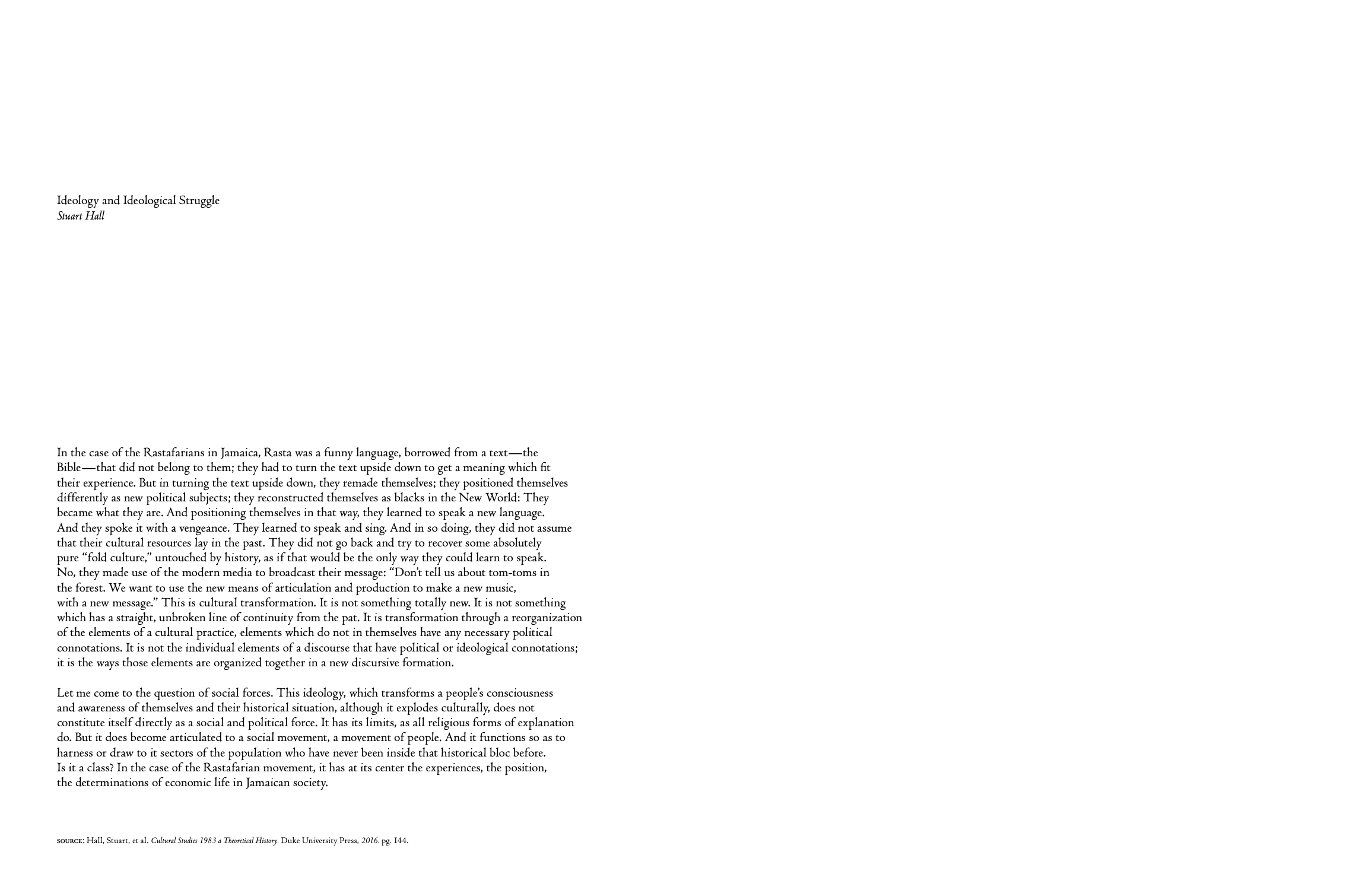
ANALYSIS ON:
Reflections on Essence (2020)
A digital publication by Wales Bonner
In the case of the Rastafarians in Jamaica, Rasta was a funny language, borrowed from a text—the Bible—that did not belong to them; they had to turn the text upside down to get a meaning which fit their experience. But in turning the text upside down, they remade themselves; they positioned themselves differently as new political subjects; they reconstructed themselves as blacks in the New World: They became what they are. And positioning themselves in that way, they learned to speak a new language.
CONCLUSION
Wales Bonner uses references to the past to analyse the future and give people the space to philosophically think about historical situations with very simple storylines. As the backs it up with writers like Ekow Eshun, Stuart Hall and herself.
Taking it back to fashion, she creates past utopia's of Black people within her garments with references of her parents their time.
REFLECTION
If I would reference AFROFUTURISM, I would immediately refer to this film as it examines Black people in a new light. Even though it is still within a contemporary context, it imagines what Black people are capable of creating.
REFLECTION
I would like to research the last part of this movie 'Sound of Rain', created by Jacolby Satterwhite. This is a phygital style I have never seen before.
ANALYSIS
SMALL: What would you say is the key motif of Birds in Paradise?
SATTERWHITE: The circularity, the 360 degrees. It starts off with a baptism and it’s about being reborn and re-centering yourself, finding home again. My mother had these songs written in the ’90s that are on the album [for the Pioneer Works show]: “Love Will Find a Way Home,” “You’re at Home.” Home is such a major theme in my work as well. It’s uncanny how she and I came together like that because my project is the exact idea—but I was doing it on my own, for 10 years technically. It’s crazy.
REFLECTION
Afro-Futurism with references from Sun Ra, I feel like researching the visual aesthetic of 'When I Get Home' is the next of my research to find the essence of their vision on Afro-Futurism.
REFLECTION
I would like to research the last part of this movie 'Sound of Rain', created by Jacolby Satterwhite. This is a phygital style I have never seen before.
ANALYSIS
BLKNWS explores the medium of film as a powerful collective experience that can be manipulated through its essential visual and auditory components. The staggering underdevelopment of the news medium format is exposed through a dynamic montage of film clips from popular culture, archival material and filmed TV news clips. Historical material is shown alongside simple images from our everyday reality. Seen through the lens of Kahlil Joseph, these images are imbued with an unusual perception of our contemporary society, which can be understood as the ethos of the artist, giving them a new life of meaning and reflection. The perspective achieved by the split-screen technique polarises the images used, fragments the narrative and exposes both the poetic and political potential of the images.
In his conceptual approach to contemporary journalism and entrepreneurship, Kahlil Joseph sees BLKNWS as a work of art, a think tank, a global network, a broadcasting platform and an ongoing archive. Each edition of BLKNWS has a permanent, online connection to the artist's studio, allowing new content to be received in real time, creating an endlessly expanding 'news broadcast' unique to each location where the work is shown.
CONCLUSION
Experiencing this work in OSCAM feels like a collection of Black memory showcasing current and future happenings.
ANALYSIS
I looked for old references where the Angisa is depicted to give people a vision of the history of this garment.
INVITE
ANALYSIS
I would say that an invite with a bit more context attracts the viewer into coming, and gives them information about what they can expect from the event.
From there on, they can decide if they want to come or not.
REFLECTION
I took a couple of invites out of my own mailbox to analyse which ones attract me the most and why. These ones are very text heavy-based and give me a guideline to start writing.
Dear friend,
We are super excited to invite you to the launch of the new 19th Garment Issue by Garment Magazine in Ted Amsterdam.
With our new headwear issue, we use the opportunities of headwear to explore what the future holds. Enter our world of innovation & technology in headwear as we encourage a cognisant attitude towards the future.
This evening, we will feature a curated panel talk with our AMFI hyperkraft students Nicolai Haas and Paula Gomez to open the special exhibition ……. Come celebrate the launch with us from 18.00 to 21.00 with music, free drinks and a live act by ….
Location
TED Amsterdam
Jan van Galenstraat 143
1056 BN Amsterdam
Time to RSVP!
Please note that this is a guest list-only event. Should you wish to bring a friend, please have them RSVP here. To have the full experience of the 19th Garment Issue, download the app …..
We can't wait to see all your hats!
Kind regards,
Garment Team
Garment Magazine
Garment Magazine is supported by the Amsterdam Fashion Institute
Test emails:
fidelio.ferrier@hva.nl, babette.veringa@hva.nl, laura.kassin@hva.nl, sanne.mes@hva.nl, folmer-boersen@hotmail.com
CONCLUSION
Within the process of coaching, we concluded that this is too much reading and should be shortened into a text that immediately gives the information you need.